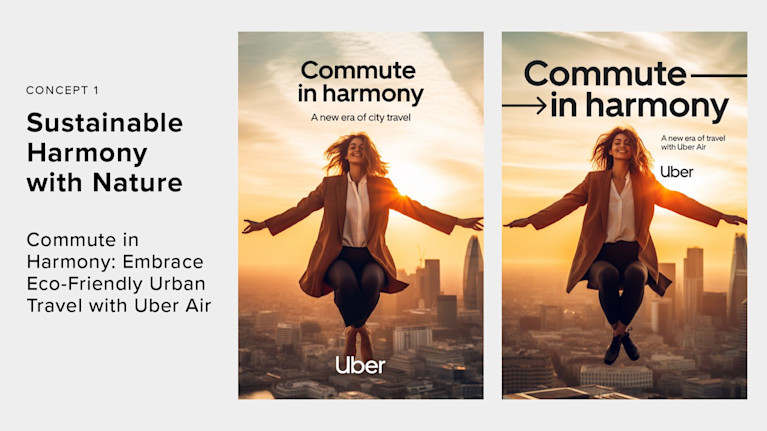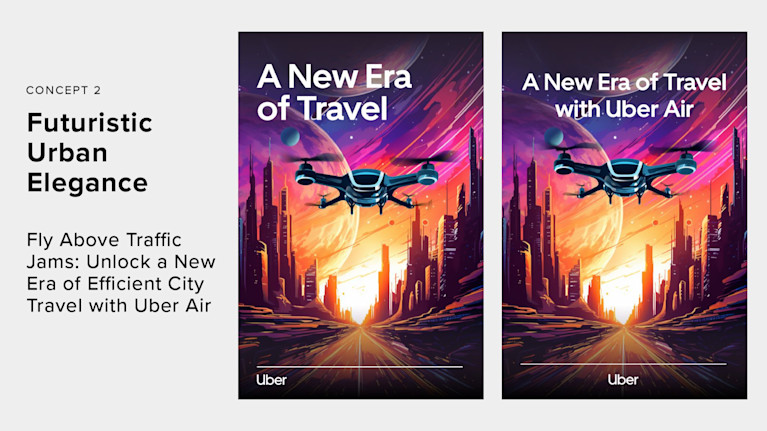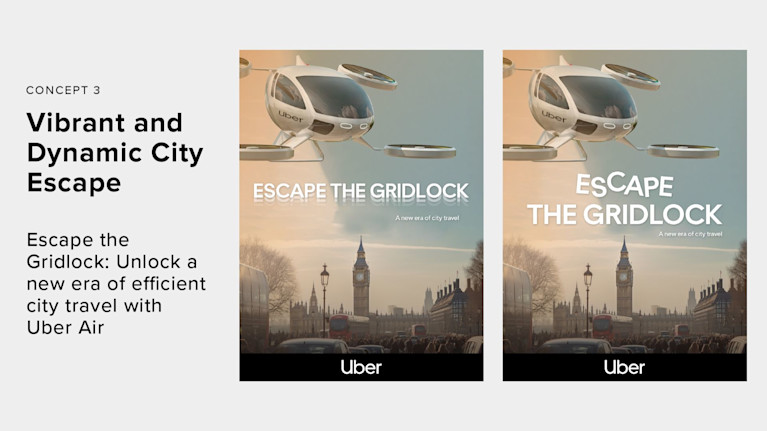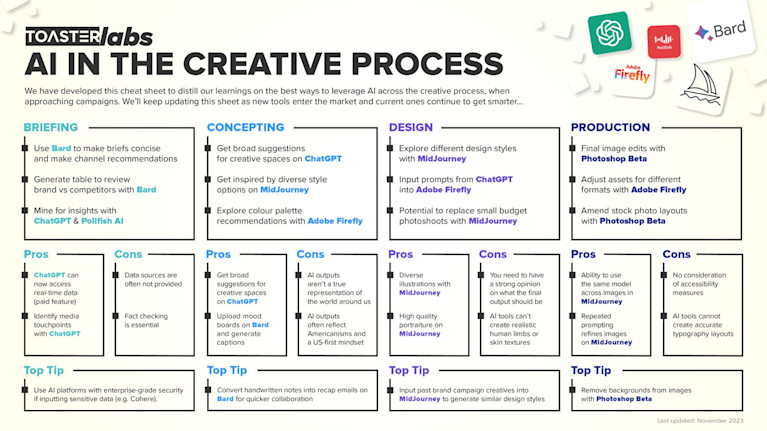As ChatGPT fast approaches its first birthday, we reflect on the 5 things we have taken away from the year marketers finally embraced AI.
Spoiler: Our biggest learning has nothing to do with optimising our creative process.
Once upon a time, when ‘midjourney’ was just another way of saying you were ‘halfway there’, Toaster launched its own AI Design Experiment AIDE. We had some fun applying AI to different creative tasks, from designing book covers to optimising design layouts. It was our first true glimpse at how AI could positively impact our industry.
Fast forward 6 years, it seems there’s a new AI product launch or feature update happening every second. So we embarked on a new experiment: instead of building our own AI tool (been there, done that), we put existing ones on trial to explore where AI fits into our agency’s vision.
To get started, we put together a completely fictional brief for AI to solve. And to keep in line with the sci-fi task, we chose an equally sci-fi product to market: flying cars.
Inspired by Uber’s early ambitions to take to the skies with actual flying taxis (sadly impacted by the pandemic), and the continued efforts of eVTOL companies like Lillium, we launched a fictional brief inviting Artificial Intelligence to have a crack at developing a campaign for “Uber Air”.
The brief: How do we target London-based commuters to consider taking their first-ever Uber Air flight?
The only rule was that we had to use AI for AS MUCH of the strategic and creative process as non-humanly possible.
Here’s what we learned from this fun experiment (besides that flying taxis can transfer you from London’s Heathrow Airport to Manchester Airport in <45 mins)!
Learning #1: LLMs Expedite Learning But Deeper Research Adds Nuance
Large Language Models (LLMs), ChatGPT and Bard, both proved useful in swiftly gaining an overview of new subject matter. They had similar abilities in building out components of our brief such as identifying engagement barriers, product benefits and even channel recommendations. We particularly enjoyed Bard's ability to provide recent data with accompanying sources, enabling us to validate our findings at speed.
BUT we still missed the rigour of studying our audience through quant data (e.g. GlobalWebIndex) and the texture that comes from conducting qualitative research. But it’s exciting to see GlobalWebIndex incorporate GPT into their product, making its data even more accessible. And similarly, Pollfish now utilises AI to automate survey building.
This doesn’t mean you have to choose one or the other – LLMs can be used to crunch through your quant data to make analysis even more efficient… but it’s worth calling out that many of these tools collect the data you provide to train their models. It’s important to seek solutions that help to keep your data private such as ChatGPT Enterprise or Cohere.
Learning #2: LLMs Are Creative Collaborators, Not Directors
ChatGPT and Bard once again impressed us with their ability to quickly generate diverse creative routes, complete with taglines and activation strategies. This time, ChatGPT excelled in wordplay and unconventional concepts like "High-Altitude Boardroom," but overall, we found ourselves frequently hitting ChatGPT’s "regenerate" button to explore a wider range of ideas. This led us to view AI as an invaluable brainstorming partner, an extension of our creative team – a perfect fit for our lean, independent agency. Strategists and Creatives of the human variety still have a valuable role to play in briefing, steering and curating AI’s output.
Learning #3: Generative AI = A Visual Spark, Not A Masterpiece
Generative AI proved useful in rapidly visualising ChatGPTs text based concepts, but some tools were better than others. Adobe Firefly struggled with rendering realistic vehicles (looking more like scrap metal than cars). Midjourney had a tendency to generate inaccurate or nonsensical elements (e.g. multiple Big Bens, London/New York taxi mashups), but after a few iterations, these evolved into much stronger visuals.









